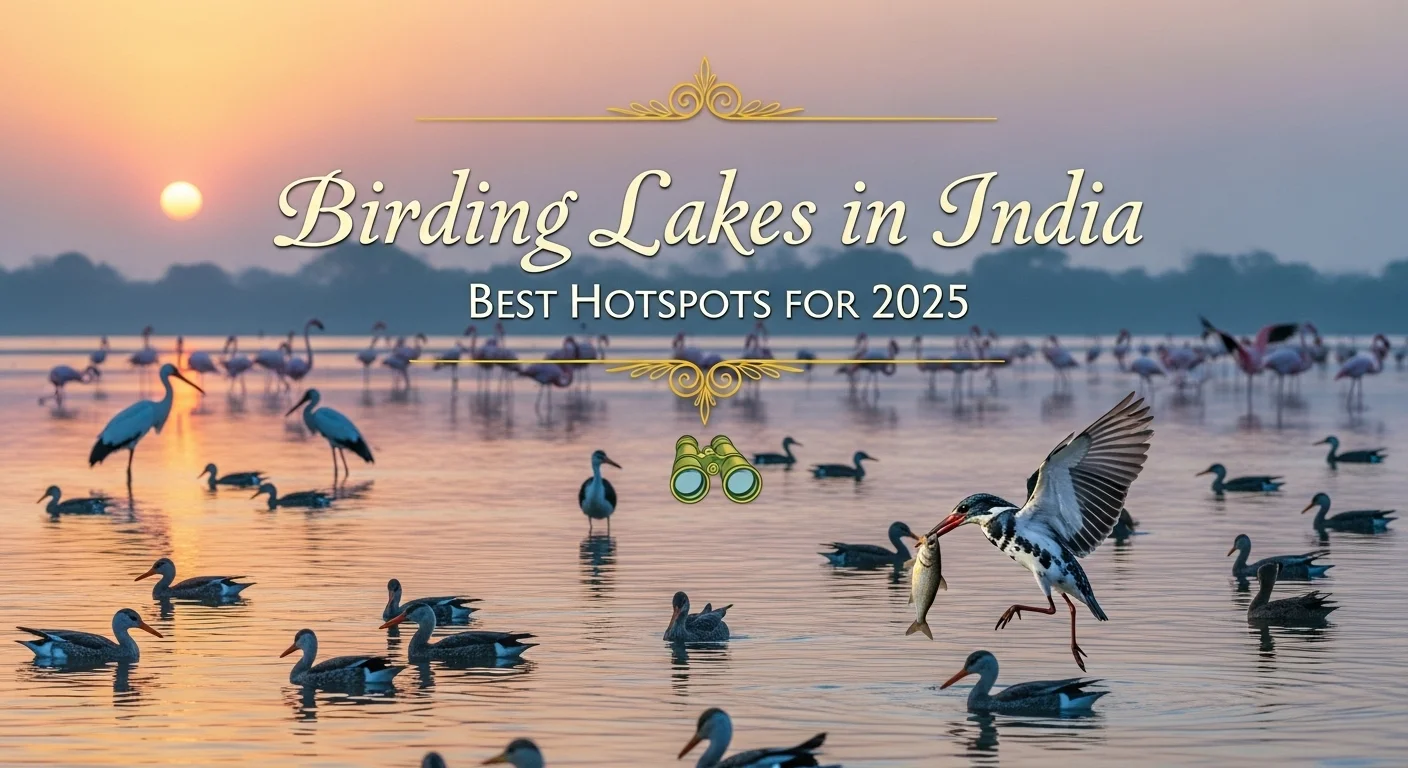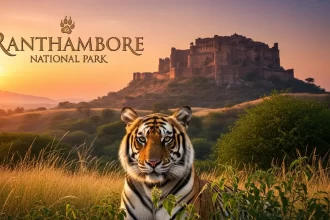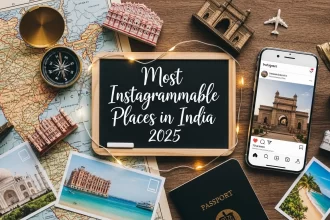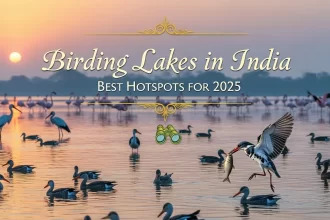India’s vast geographical diversity from snow-fed Himalayan lakes to tropical lagoons makes it a paradise for bird enthusiasts. Every winter, thousands of migratory birds in India arrive from Siberia, Central Asia, and Europe, transforming tranquil lakes into living masterpieces of color and motion. Whether you’re a passionate wildlife photographer, a conservationist, or simply someone who loves nature, visiting the Best birding lakes in India offers an experience that’s both thrilling and soul-soothing.
These shimmering water bodies are not just havens for exotic species but are also at the heart of eco-tourism in India, supporting local livelihoods and aiding the conservation of rare bird species in India.
Top 10 Birding Hotspots in India
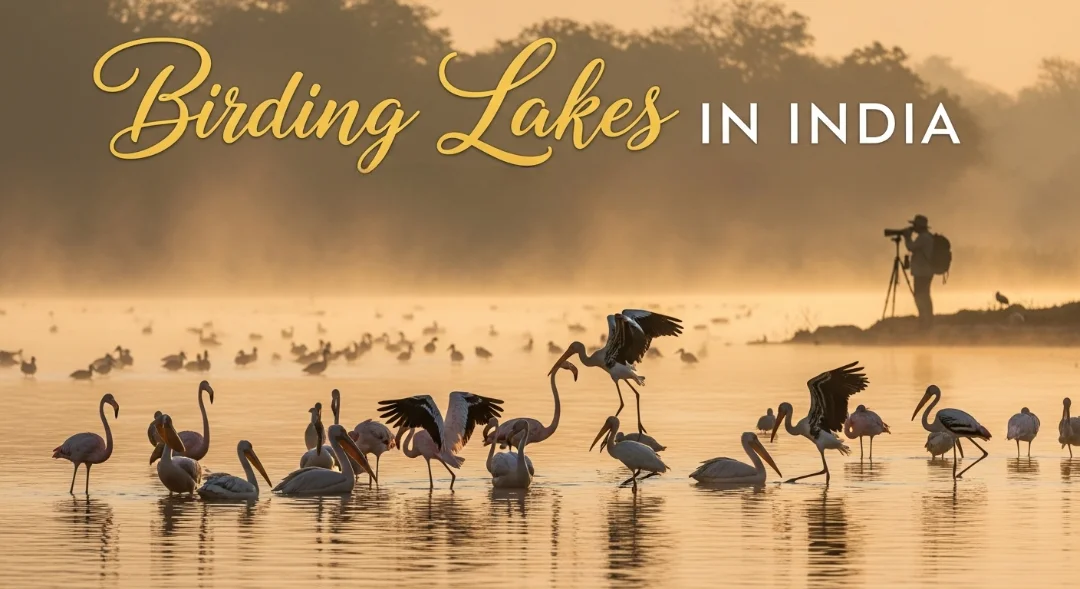
Below are the top birding hotspots every traveler should explore: a mix of scenic beauty, biodiversity, and cultural depth.
1. Chilika Lake, Odisha
Chilika Lake is Asia’s largest brackish lagoon and among the Best birding lakes in India, listed as a UNESCO Wetland of International Importance. The Nalabana Bird Sanctuary inside the lake is home to more than 200 bird species during the migration season.
Timings: 6:00 AM – 6:00 PM
Entry Ticket: ₹100
Best Time to Visit: November – February
Things to Do:
- Take a boat to Nalabana Island for close-up views of flamingos and pelicans.
- Spot white-bellied sea eagles, herons, and sandpipers.
- Visit Satapada to see Irrawaddy dolphins.
- Explore local seafood markets and traditional villages.
Chilika perfectly represents wildlife tourism in India, merging birding, photography, and local culture.
2. Bharatpur (Keoladeo) National Park, Rajasthan
Declared a UNESCO World Heritage Site, Keoladeo National Park in Bharatpur is among the famous birding spots of India. Hosting over 370 species from the rare Siberian Crane to painted storks it’s an iconic bird sanctuary and wetland.
Timings: 6:30 AM – 5:00 PM
Entry Ticket: ₹75 (Indian) / ₹500 (Foreigner)
Best Time to Visit: October – March
Things to Do:
- Ride a cycle rickshaw through picturesque wetlands.
- Observe pelicans and cranes at sunrise.
- Visit the conservation museum.
- Capture stunning images for bird photography destinations albums.
This park remains one of the Best birding lakes in India, ideal for studying winter bird migration patterns.
3. Loktak Lake, Manipur
Known for its floating islands or phumdis, Loktak Lake is Northeast India’s largest freshwater lake and one of the top national parks for birdwatching. The lake surrounds Keibul Lamjao National Park the only floating park in the world.
Timings: 7:00 AM – 6:00 PM
Entry Ticket: ₹100
Best Time to Visit: November – March
Things to Do:
- Spot Burmese Pied Mynas and Northern Pintails.
- Visit Sendra Island for panoramic views.
- Learn about the Sangai deer conservation project.
Loktak is a gem of eco-tourism in India, balancing biodiversity and local tradition.
4. Pulicat Lake, Andhra Pradesh Tamil Nadu Border
India’s second-largest brackish lagoon, Pulicat Lake, is known for hosting over 20,000 flamingos annually. Its pink horizon during the migration season makes it one of the best bird photography destinations in the country.
Timings: 6:00 AM – 6:00 PM
Entry Ticket: Free
Best Time to Visit: December – March
Things to Do:
- Observe large flocks of flamingos and painted storks.
- Explore Pulicat Bird Sanctuary.
- Visit the nearby Dutch-era buildings.
- Take serene boat rides across the lake.
Pulicat seamlessly combines heritage, biodiversity, and wildlife tourism in India.
5. Sambhar Lake, Rajasthan
India’s largest inland saltwater lake, Sambhar, becomes a haven for flamingos, stints, and sandpipers during winter. Its reflective salt flats create magical photo opportunities.
Timings: Open all day
Entry Ticket: Free
Best Time to Visit: November – February
Things to Do:
- Witness flocks of flamingos at dawn.
- Visit Shakambari Mata Temple.
- Explore salt pans and nearby villages.
Sambhar Lake is a photographer’s delight, ranked among the Best birding lakes in India for wildlife photography in India.
6. Pong Dam Lake, Himachal Pradesh
Located in the Kangra Valley, Pong Dam Lake attracts over 100,000 birds each winter and is designated a Ramsar Wetland. It’s a must-visit for migratory birds in India and birding enthusiasts.
Timings: 6:00 AM – 6:00 PM
Entry Ticket: ₹100
Best Time to Visit: November – March
Things to Do:
- Watch bar-headed geese and coots.
- Explore Kangra Fort and local temples.
- Take early morning boat rides for great photos.
Pong Dam exemplifies eco-tourism in India, where conservation meets community-based tourism.
7. Nal Sarovar Bird Sanctuary, Gujarat
A short drive from Ahmedabad, Nal Sarovar welcomes more than 250 species annually. This wetland is among the famous birding spots in Western India.
Timings: 6:00 AM – 6:00 PM
Entry Ticket: ₹75
Best Time to Visit: November – February
Things to Do:
- Early morning boat tours for the best sightings.
- Observe flamingos, pelicans, and spoonbills.
- Explore nearby handicraft villages.
A shining example of sustainable eco-tourism in India, Nal Sarovar offers deep insight into India’s bird sanctuaries and wetlands.
8. Vembanad Lake, Kerala
Kerala’s largest lake, Vembanad, is home to the Kumarakom Bird Sanctuary a paradise for bird watching in India and one of the Best birding lakes in India in the south.
Timings: 6:00 AM – 6:00 PM
Entry Ticket: ₹100
Best Time to Visit: October – February
Things to Do:
- Enjoy houseboat cruises for tranquil bird viewing.
- Spot darters, herons, and migratory ducks.
- Stay at lakeside eco-resorts.
Vembanad is a favorite among travelers seeking bird photography destinations amid Kerala’s backwaters.
9. Harike Wetlands, Punjab
At the junction of the Beas and Sutlej rivers, Harike Wetlands is Punjab’s largest wetland and one of India’s critical stopovers for migratory birds.
Timings: 7:00 AM – 5:00 PM
Entry Ticket: Free
Best Time to Visit: November – February
Things to Do:
- Spot pintails, pochards, and coots.
- Visit Gurudwara Nanaksar Sahib.
- Learn about local conservation efforts.
Harike is a vital part of wildlife tourism in India, offering a blend of nature and spirituality.
10. Deepor Beel, Assam
Just outside Guwahati, Deepor Beel is one of the most significant wetlands of the Brahmaputra Valley and a UNESCO-recognized site. It shelters over 190 bird species, including endangered storks and pelicans.
Timings: 6:00 AM – 6:00 PM
Entry Ticket: ₹50
Best Time to Visit: November – March
Things to Do:
- Visit traditional Assamese villages.
- Explore nearby Garbhanga Reserve Forest.
- Capture birds against breathtaking sunsets.
Deepor Beel remains one of the famous birding spots for wildlife photography in India and biodiversity study.
Also Read: Exploring 10 Natural Wonders of India That Will Leave You Breathless
Why India Is a Birdwatcher’s Paradise
India’s birding culture goes beyond spotting exotic species it’s about witnessing coexistence between humans and nature. The Best birding lakes in India mirror India’s commitment to sustainability and ecological balance.
Why India shines in wildlife tourism:
- Geographical diversity: From Himalayan wetlands to coastal lagoons.
- Cultural connection: Birds are woven into Indian folklore.
- Sustainability: Local people benefit from eco-tourism in India.
- Accessibility: Most lakes are easy to reach from major cities.
Travel Tips for Bird Lovers
- Visit early morning or late evening for active sightings.
- Carry binoculars and telephoto lenses.
- Wear earth-tone clothing to blend with surroundings.
- Avoid flash photography or loud sounds.
- Hire local guides for expert insight.
Final Thoughts
From the salt flats of Rajasthan to Kerala’s backwaters, these Best birding lakes in India showcase extraordinary biodiversity and timeless beauty. Whether photographing flamingos at Pulicat or pelicans in Bharatpur, every trip deepens your connection with nature.
Exploring these top birding hotspots is not just about travel it’s about supporting the conservation of rare bird species in India and promoting responsible wildlife tourism in India. Pack your camera, embrace the silence, and let the birds guide you through India’s natural symphony.
Also Read: Top 5 Best Places to Visit in India for Holidays | Unique Travel Ideas & Vacation Spots
FAQs (Frequently Asked Questions)
Q1. Which lakes in India are best for birding?
Ans: Some of India’s top birding lakes include Chilika Lake (Odisha), Nal Sarovar (Gujarat), Loktak Lake (Manipur), Deepor Beel (Assam), and Pulicat Lake (Andhra Pradesh) all known for diverse migratory and resident bird species.
Q2. What is the best season to visit Indian lakes for birdlife?
Ans: The winter months (November to February) are ideal for birding, as many migratory species arrive and wetlands brim with avian activity.
Q3. Do I need a guide or permit to birdwatch at these lakes?
Ans: Yes, many birding hotspots are in protected or regulated areas. It’s often advisable (or required) to hire a local guide and obtain permits, especially for early-morning birding tours.
Q4. Which rare bird species can be spotted at India’s birding lakes?
Ans: At lakes like Chilika and Deepor Beel, you can expect to see Greater Flamingos, White-bellied Sea Eagles, Spot-billed Pelicans, and various species of ducks, terns, and waders during migratory season.
Q5. How early should I go for birdwatching at lakes?
Ans: Bird activity is highest at dawn to early morning, so arriving just before sunrise gives the best chances to observe feeding, flight patterns, and roosting behavior.
Q6. Are India’s lakes facing threats that impact birdlife?
Ans: Yes – habitat degradation, pollution, encroachment, and water level changes are common threats affecting bird populations and wetland health. Many conservation efforts are active to protect key lakes and migratory corridors.
Thank you for trusting Outdoorkeeda as your guide for your travel needs.

